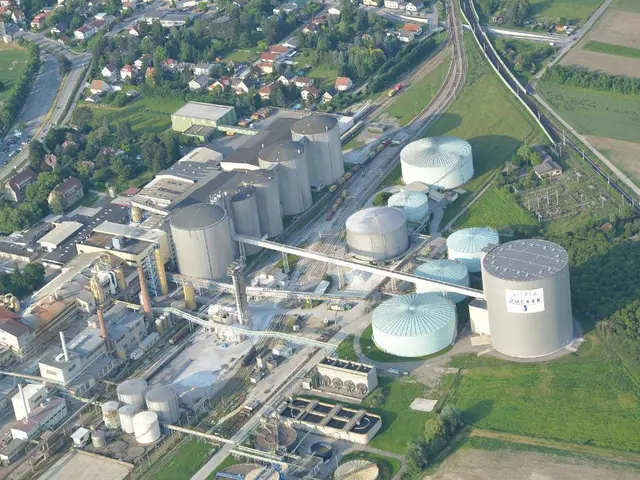Trump's Excessive Kindness Towards China: An Examination
In the ever-evolving landscape of international trade, the US-China relationship has been marked by a series of events since April 2019. The past few years have seen periods of acute friction, partial agreements, sustained tariffs, and cautious negotiations.
Negotiators are currently focusing on avoiding a return to triple-digit tariffs on Chinese goods and US exports. As of August 2025, a framework agreement has been reached to uphold the terms of the Geneva trade deal from May 2025. This agreement signals some progress but falls short of full tariff removals or a comprehensive new deal. The US continues to impose a complex tariff regime on Chinese imports, with an effective 55% tariff rate on many goods.
The trade war that began in 2018 under the Trump 1.0 administration saw successive tariff rounds, culminating in the January 2020 Phase One agreement. However, this pause in the tariff conflict did not last long, and a new cycle of escalating tariffs began in 2025.
The Biden administration, during its presidency, largely maintained the Trump-era tariffs, with only limited adjustments and targeted tariff hikes toward late 2024 and early 2025. The trade tensions persisted without significant rollback of tariffs.
In a recent development, Trump has extended the tariff pause on Chinese goods until early November, signaling a possible easing of tensions. However, the US is pushing for tighter restrictions on China's access to advanced artificial intelligence chips.
China, the dominant producer and refiner of rare earth minerals, is seeking a lasting rollback in US tariffs, especially around technology and manufacturing. In response, the US is negotiating a broader trade deal with China that could include technology, energy, and rare earth minerals.
Meanwhile, China is discouraging the use of Nvidia's H20 processor, a high-end US chip currently allowed for export to China. India, a favored partner at the start of Trump's second term, is now facing a punishing tariff of up to 50% on general goods and an additional 25% on Russian oil purchases.
The tariff rates vary by product category, but the overall tariff burden remains high, shaping a complex and fluctuating trade environment. Efforts to decouple in strategic sectors coexist with ongoing trade and tariff negotiations, with the US explicitly seeking to reduce reliance on China in critical industries like semiconductors and medicine while continuing imports of lower-value goods.
Experts warn against complacency from both sides. Han Shen Lin, China Managing Director of strategic advisory firm The Asia Group, has urged against complacency from the Chinese side due to Trump's unpredictable nature. Garcia-Herrero, chief economist for Asia-Pacific at French investment bank Natixis, predicts a partial trade thaw that benefits US firms while sidelining key allies, including the European Union, South Korea, and Japan.
In summary, the trade relationship between the US and China since April 2019 has been defined by periods of acute friction, partial agreements, sustained tariffs, and cautious negotiations. The current truce has produced a framework agreement but has not removed the majority of tariffs or resolved deeper trade issues. The future of this relationship remains uncertain, with both parties continuing to navigate the complexities of international trade.
- The trade war between the US and China, initiated in 2018, has been a significant focus in the technology industry, with each nation imposing tariffs on goods, including advanced artificial intelligence chips.
- The US economy, particularly its manufacturing and finance industries, has been impacted by these tariffs, leading to a complex and fluctuating trade environment.
- Europe, Asia, and other global players closely monitor the US-China trade relationship, as its outcome could have far-reaching implications for the world economy.
- The US government, through policy and legislation, has been actively shaping and reshaping its trade relations with China, aiming to reduce dependence on China in strategic sectors like semiconductors and medicine.
- News outlets worldwide report on the latest developments in the US-China trade negotiations, with politics playing a significant role in determining the direction of these talks.
- As a result of these tensions, countries like India are facing punishing tariffs, potentially disrupting the balance of trade in the Asia-Pacific region.
- Experts have expressed concern about the long-term consequences of the US-China trade conflict, warning both nations against complacency, as ongoing war-and-conflicts and policy-and-legislation could lead to unforeseeable economic consequences for the general news audience.




